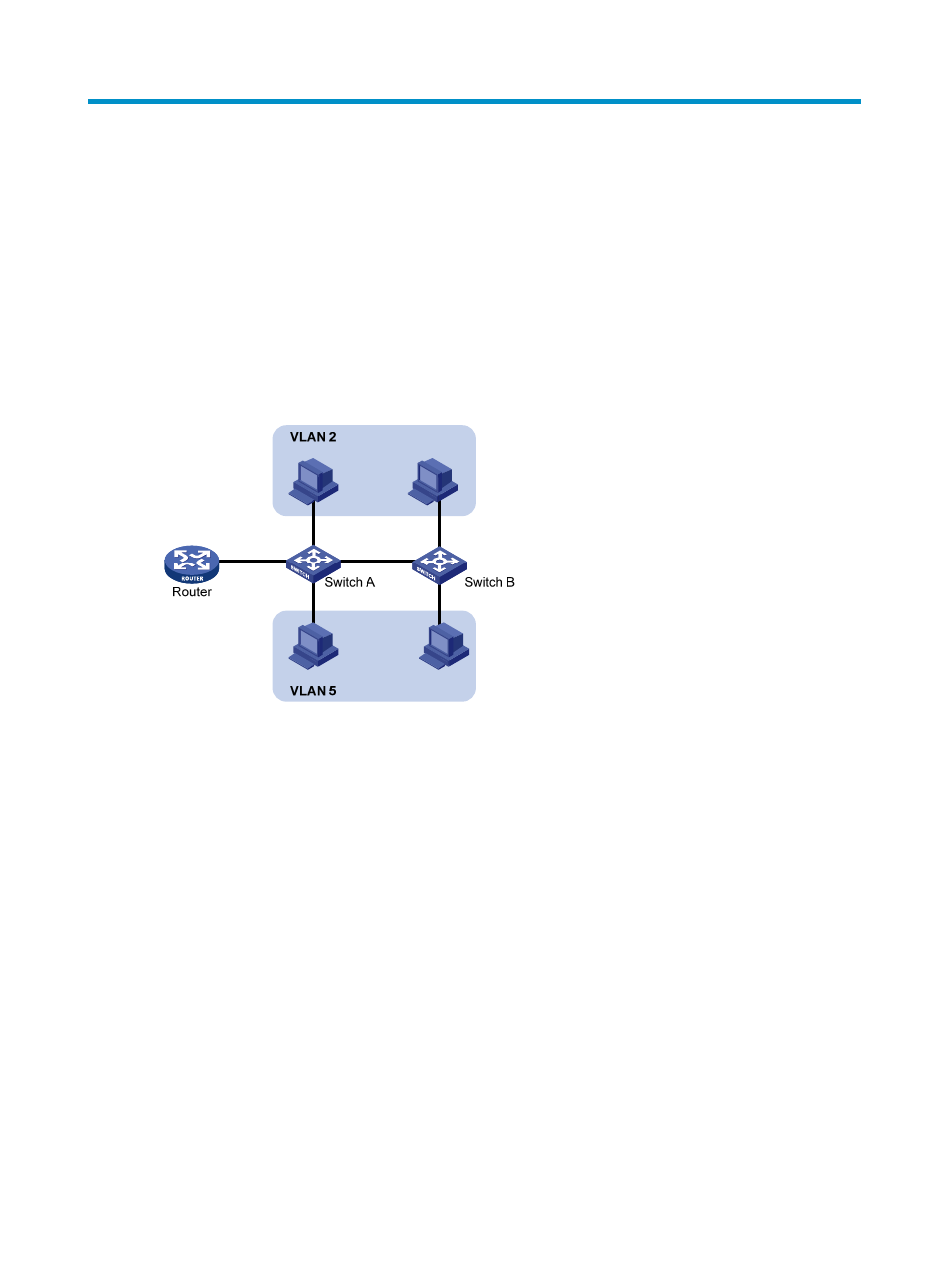Configuring vlans, Overview, Configuration guidelines – H3C Technologies H3C WX3000E Series Wireless Switches User Manual
Page 180

159
Configuring VLANs
Overview
Ethernet is a network technology based on the Carrier Sense Multiple Access/Collision Detect
(CSMA/CD) mechanism. The medium is shared, so collisions and excessive broadcasts are common on
an Ethernet. To address this issue, virtual LAN (VLAN) was introduced to break a LAN down into
separate VLANs. VLANs are isolated from each other at Layer 2. A VLAN is a bridging domain, and all
broadcast traffic is contained within it, as shown in
Figure 123 A VLAN diagram
You can implement VLANs based on a variety of criteria. However, the Web interface is available only
for port-based VLANs, which group VLAN members by port. A port forwards traffic for a VLAN only after
it is assigned to the VLAN.
For more information about VLAN, see "
About the H3C Access Controllers Web-Based Configuration
Configuration guidelines
When you configure VLAN, follow these guidelines:
•
VLAN 1 is the default VLAN, which cannot be manually created or removed.
•
Some VLANs are reserved for special purposes. You cannot manually create or remove them.
•
Dynamic VLANs cannot be manually removed.
•
By default, an access port is not a tagged member of a VLAN, and a hybrid or trunk port is a
tagged member of VLAN 2 to VLAN 4049.
- H3C WX5500E Series Access Controllers H3C WX3500E Series Access Controllers H3C WX2500E Series Access Controllers H3C WX6000 Series Access Controllers H3C WX5000 Series Access Controllers H3C LSUM3WCMD0 Access Controller Module H3C LSUM1WCME0 Access Controller Module H3C LSRM1WCM2A1 Access Controller Module
